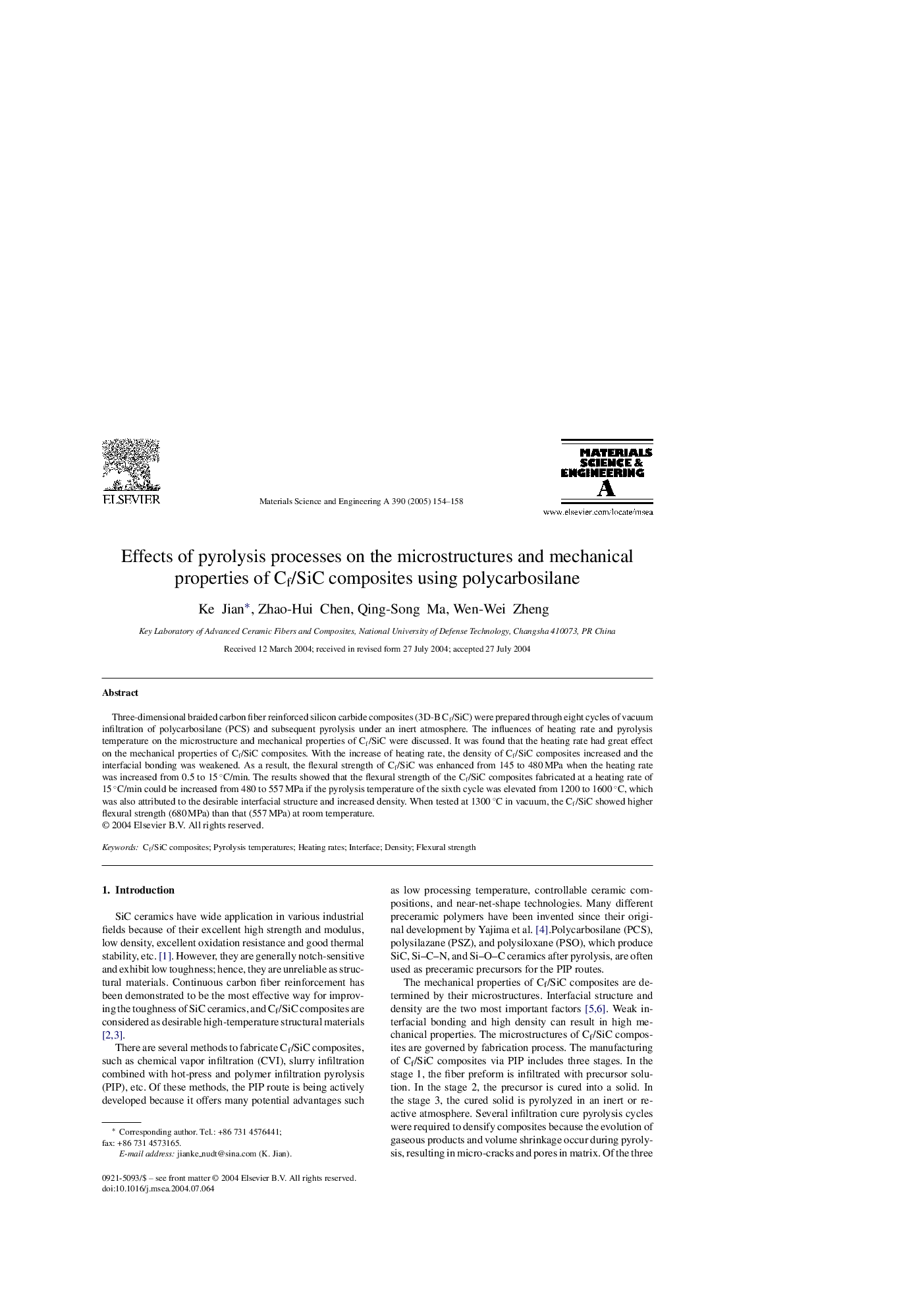| Article ID | Journal | Published Year | Pages | File Type |
|---|---|---|---|---|
| 9796665 | Materials Science and Engineering: A | 2005 | 5 Pages |
Abstract
Three-dimensional braided carbon fiber reinforced silicon carbide composites (3D-B Cf/SiC) were prepared through eight cycles of vacuum infiltration of polycarbosilane (PCS) and subsequent pyrolysis under an inert atmosphere. The influences of heating rate and pyrolysis temperature on the microstructure and mechanical properties of Cf/SiC were discussed. It was found that the heating rate had great effect on the mechanical properties of Cf/SiC composites. With the increase of heating rate, the density of Cf/SiC composites increased and the interfacial bonding was weakened. As a result, the flexural strength of Cf/SiC was enhanced from 145 to 480 MPa when the heating rate was increased from 0.5 to 15 °C/min. The results showed that the flexural strength of the Cf/SiC composites fabricated at a heating rate of 15 °C/min could be increased from 480 to 557 MPa if the pyrolysis temperature of the sixth cycle was elevated from 1200 to 1600 °C, which was also attributed to the desirable interfacial structure and increased density. When tested at 1300 °C in vacuum, the Cf/SiC showed higher flexural strength (680 MPa) than that (557 MPa) at room temperature.
Related Topics
Physical Sciences and Engineering
Materials Science
Materials Science (General)
Authors
Ke Jian, Zhao-Hui Chen, Qing-Song Ma, Wen-Wei Zheng,
